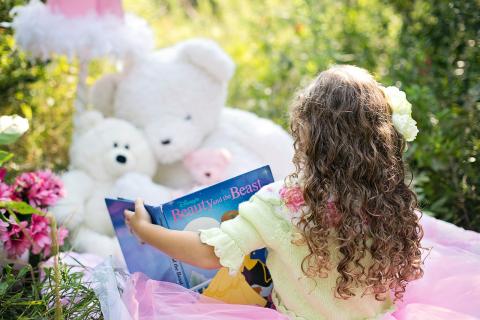
Five Ways to Help Your Children Succeed in School and Life in Late Spring with #MomsReading!
Welcome to another installment of #MomsReading! In this series, we discuss books and activities that parents and care providers can use to build a child’s social and emotional development. The rest of the posts in the series can be found here.
Social-emotional skills support the success of children in school and in life! For more info on what social-emotional skills are, check out our first blog post.
There are endless possibilities for books to read though, but below are some of our top picks that will help build your child’s emotional and cognitive skills this Spring. Share any your favorites on Facebook and Twitter using the #MomsReading hashtag and let us know what books your family is enjoying!
Relationship Skills
Read this! Read Un Gato y Un Perro: A Cat and a Dog by Claire Masurel, a bilingual story about a cat and dog who live in the same house, but do not get along. One day, disaster strikes and the pair end up needing one another to get back their beloved toys. After reading, look at how both cat and dog are different and how they worked together to resolve a conflict.
Do this! Talk about teamwork! Mikelle Despain at Kids Village says “a lot of teamwork comes from making sure your child has children his or her age with whom to socialize and work together.” Build on this by talking to your child about the value of teamwork. But additional value can also be derived from conversations with your child. Giving accolades when you see your child, a sibling, or a friend promoting cooperating well or working well as a team will go a long way. Follow up this behavior by explaining how their action contributed to the overall success of the team.
Do this! Promote a collaborative and pro-teamwork space in your home. This can be done by including your child in the daily activities of the home, such as doing dishes, sweeping the floor, feeding the dog, and more. These activities will allow your child to practice contributing to your family team and see how their work plays a part in making the household a success.
Self-Awareness
Read this! Read Drum Dream Girl: How One Girl's Courage Changed Music by Margarita Engle, a story Inspired by the childhood of Millo Castro Zaldarriaga. Milo was a Chinese-African-Cuban girl who broke Cuba's traditional taboo against female drummers, making this an inspiring and true story for dreamers everywhere. After reading, talk to your child about their interests and dreams. Encourage them to stick with it, whatever it is, until the end.
Do this! Create a modified version of the “I Am Canvas” from the Brave Girls Club. While the original activity is for girls, the lessons are important for children of all genders! Take a small blank canvas and tell your child to make a collage of who they are. Encourage them to use the “I Am…” phrase and ask them to make a self portrait. After, discuss with your child about what the included on the canvas, using the last few pages of the “I Am” instructions for topics to go over.
Do this! The “Toot Your Own Horn” worksheet from Susyn Reeve, M.Ed. and Joan Breiner, M.Ed. offers some great discussion topics about how to help your child recognize themselves accurately. After the discussion, if and when your child is feeling down, remind them of the things you discussed. Remind them of their strengths and everything that make them who they are. .
Social Awareness
Read this! Read Good Night Stories for Rebel Girls by Francesca Cavallo and Elena Favilli, a collection of stories about 100 powerful women from the past and present. While reading, discuss what the women in the stories accomplished. Also discuss what they overcame to accomplish these remarkable feats.
Do this! Around the age of two, children start learning about perspective-taking. You can help them further this learning by pointing out another person's emotions. An example of this is showing your child another child who is crying. Instead of just identifying the emotion, expand the conversation to why the child may be upset. This will help your child understand the perspective of others.
Do this! When asking how their day was, limit half the questions to be specifically about your child. The rest of the questions can be about friends, caregivers, or other people who may interact with your child throughout the day. According to Michele Borba, this will get children thinking about others and to think about the world in a different way, centered around others.
Self Management
Read this! Read Oh No, George! by Chris Haughton, a story about George the dog who struggles with impulse control due to all the temptations around him. After reading, talk to your child about temptations they come across in their life, like eating cookies before dinner or crying when they don’t get their way. Discuss how they manage these impulses and how they practice self-discipline.
Do this! A large part of being able to practice self-discipline and manage impulses is to recognize one’s own emotions. Bill Zimmerman offers a wide variety of free printables that can help your child recognize different emotions.
Do this! Games, such as Simon Says and Red Light Green Light, let your child practice their impulse control in a fun and age appropriate way. Verywell says, “With practice your child can train his brain to have better self-control. But make sure you make practice fun. If you force him to sit still or pay attention to boring tasks too long, your efforts may backfire.” Try playing these games with your child at home!
Responsible Decision Making
Read this! Read Lilly's Purple Plastic Purse by Kevin Henkes, a story about Lilly who loves everything about school, but loves her purple plastic purse even more. When Lilly is so excited about the purse that she cannot focus before sharing time, her teacher confiscates the purse. Angry, Lilly gets revenge then feels remorse about her actions. After reading, ask your child to reflect on how Lilly handled the situation and what she could have done differently.
Do this! Host a problem solving circle. Invite family or friends to gather to read a story or watch a TV episode, one example being the Berenstain Bears, that centers around resolving a problem. After, ask the children what happened and how was the problem solved. As a follow up, ask the children who they would turn to for help if they had a similar problem.
Do this! One of the best ways to teach your child about responsible decision making is to let them make mistakes, as long as they are not putting their health and well being at risk. Tamekia Reece from Parents Magazine uses the example of letting a kindergartner bring their entire allowance to school. The mistake of losing a dollar during recess will be a more valuable lesson than telling your child about the potential consequences.
What are you reading with your kids? Remember to share with us on Facebook or Twitter using the #MomsReading hashtag!



The views and opinions expressed in this post are those of the author(s) and do not necessarily reflect those of MomsRising.org.
MomsRising.org strongly encourages our readers to post comments in response to blog posts. We value diversity of opinions and perspectives. Our goals for this space are to be educational, thought-provoking, and respectful. So we actively moderate comments and we reserve the right to edit or remove comments that undermine these goals. Thanks!